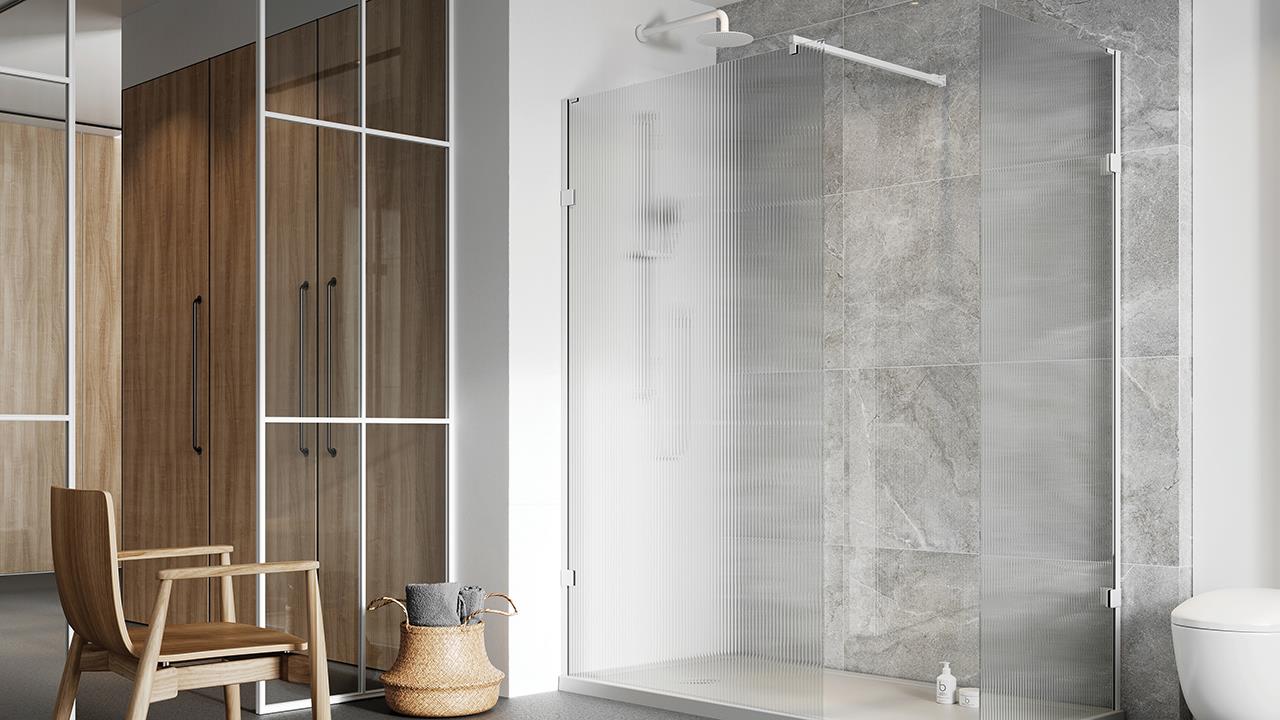

Wetrooms are now a very fashionable showering space. The reason for this is clear: wetrooms offer flexibility in heights, shapes, glass thicknesses, and price points – with a multitude of design and colour options to choose from. Wetroom panels can either be fitted to low level shower trays or straight to floor to create a ‘true’ wetroom, with a number of sizes and options available.
It is important for the installer to identify the appropriate wetroom system to begin with, however. There are many options available and each system tends to focus on a particular need.
There are substrates that are suitable for concrete floors, as well as some that are structural for wooden floors. Make sure you understand where the joists are and how the substrate fixes before getting started.
Some systems are suited to small mosaic tiles only and some have large angles to minimize the number of cutting lines on larger tiles. It may be that you simply use a levelling compound – in which case you must ensure that the fall is correct.
If your customer is just aiming for the ‘wetroom look’ (which is actually the vast majority of installations) then you simply need a low level shower tray – very much the cheapest option. There are huge variations in cost between fittings, with a £2,000 budget being an optimistic base cost for a 5m2 room.
One of the most important things to consider when installing a wetroom is the viability of the room’s waterproofing and water-tightness. Due to the nature of a wetroom, there will be increased levels of moisture in the air compared with a regular bathroom, so you need to take this into account.
There are also a number of steps to be followed to correctly tank a wetroom. If your customer opts for a shower tray configuration, then installation is much easier as you are only simulating a wetroom and there is no need for tanking.
Check how the tray is meant to be installed as this dictates the height of the tray in use, and then assess the thickness of your floor tiles to understand if you have level access or a small step once installation is complete.
If your customer opts for a straight to floor configuration, you can choose from an almost limitless choice of sizes, shapes, and heights. While a doorless walk-in shower looks very minimal and on-trend, be conscious of where all the water will go. It is strongly recommended to have a pivoting deflector panel to vastly increase water integrity in the wetroom.
A wetroom is the ultimate waterproofing failsafe if done correctly. Poor installation is the main variable with whatever system you choose.
Once the substrate is installed then you should apply the following: a primer; seal strips for all joints and corners (which have elasticity to accommodate floor movement); special mats around the drain; and then the actual tanking membrane itself.
Each process needs to dry, so the installation typically takes three days, but that obviously depends upon the area that you are tanking. In the UK, people generally only tank the active wet showering area, so your costs are dictated by the size of the wet area – it is a section of the bathroom rather than the full room. If your customer has the space, be generous.
Also, make sure to recommend the appropriate type of shower waste for the type of installation your customer has chosen.
There are a multitude of options available, including linear wastes, hidden wastes, or easy clean wastes. Some are suitable for wheelchair users and some definitely are not. The most important factor of all is to match the waste’s drainage capacity to the shower’s rate of flow. Also, check the location of joists and pipework to ensure the correct fall.
The shower panel design is a really important consideration for customers who want to achieve an effective wetroom design. This is by far the most visual and fashionable part of the whole wetroom.
Glass thickness tends to be 8mm or 10mm. Printed glass offers options such as the industrial-chic framed look. Textured glass is rapidly rising in popularity – for example ‘fluted’ glass offers a degree of opacity without affecting lighting. As an installer it is your responsibility to ensure the glass is CE Marked – a legal requirement.
Lastly, but certainly not least, cleanability always comes high as a customer concern in bathroom design surveys – more so now than in pre-pandemic times. Ensure the glass panel comes with a (guaranteed) water repellent coating for easy cleaning. Also check that the wall profiles for the glass panels are silicone free – this helps prevent buildup of mould or mildew.
If you'd like to keep up-to-date with the latest developments in the heating and plumbing industry, why not subscribe to our weekly newsletters? Just click the button below and you can ensure all the latest industry news and new product information lands in your inbox every week.